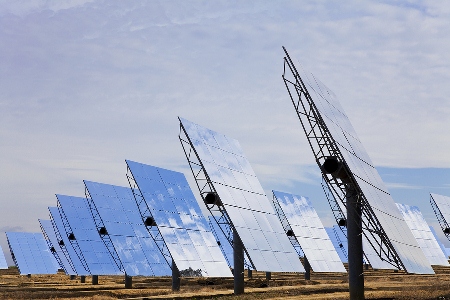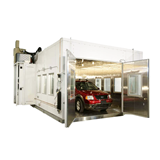Minister for Industry and Science Ian Macfarlane has visited the plant operated by solar component supplier Heliostat SA at Beverley, in Adelaide's western suburbs. Heliostat SA is a new company employing former auto industry workers in South Australia that is a new division of Precision Components, an Australian company affected by the car industry downturn.
"When auto producers announced their decision to cease manufacturing cars in Australia by the end of 2017, the Government moved quickly to limit the flow-on effect to parts suppliers by creating a fund aimed at helping suppliers and workers to transfer skills and equipment to new industries," Macfarlane said.
Precision Components received a $1 million investment from the Australian Government to diversify into renewable energy, using the pressed metal equipment previously used in automotive parts manufacturing. Former production workers also transferred their skills to the manufacture of solar energy devices.
Heliostat SA approached CSIRO about licensing the science agency's unique heliostat technology in early 2014. Less than six months later the technology has now been deployed in a hybrid solar tower system by Mitsubishi Hitachi Power Systems in Yokohama, Japan with that company set to use the Australian technology to run solar research projects in Japan for the next few years.
"This is a perfect example of manufacturing transitioning successfully to a whole new field, using the skills and equipment from one industry to benefit a very different one. It's also an illustration of what can be achieved when science is brought to the centre of industry policy," Macfarlane said.
The Japanese concentrated solar power field represents the second international deployment of CSIRO heliostat technology, following on from the recent installation of a research field in Cyprus.
Solar thermal tower technology uses many mirrors or heliostats that accurately track the sun, reflecting light towards a receiver on top of a tower which heats a fluid. The fluid is then used to drive a turbine for generating electricity. As it is relatively cheap to store, thermal energy has great potential for large scale power, even when the sun is not visible.





